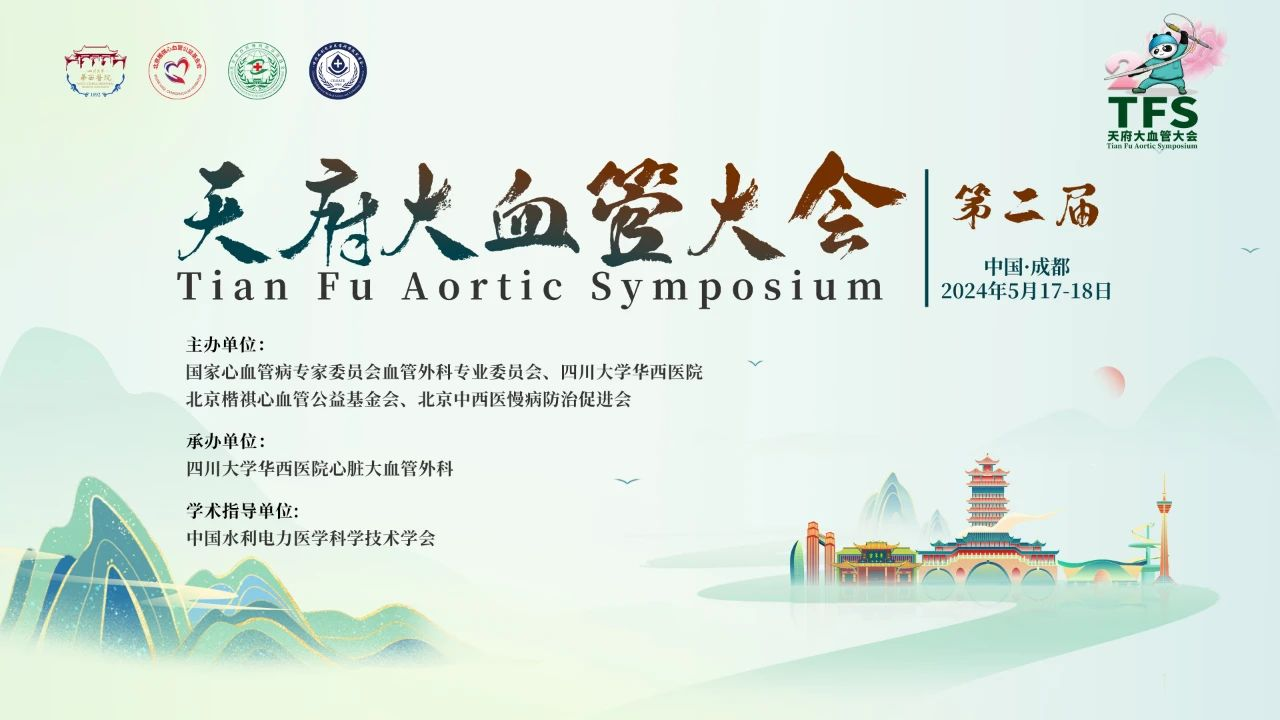
The 2nd Tianfu Vascular Conference (TFS 2024) was successfully held on May 17-18, 2024, in Chengdu. From the pinnacle of medical science, we foresee the future of the vascular discipline, recognizing the immense responsibility and honorable mission ahead. As members of the vascular field, we are tasked with advancing the discipline and improving diagnostic and treatment standards. In the future, we will analyze the content of TFS lectures to help you understand the most cutting-edge vascular treatment experiences.
During this conference, Professor Zheng Junmeng and his team from the Sun Yat-sen Memorial Hospital of Sun Yat-sen University presented a case study on the use of Conformable Aortic Dissection Stent (CADS) for treating a short trapezoidal neck aortic arch aneurysm, offering comprehensive insights into the practical application and clinical cases of TEVAR technology.
Case Introduction
Patient: Mr. He, 64 years old, admitted for an aortic arch aneurysm. He had a history of hypertension controlled with medication but no history of transfusion, surgery, or allergies. Preoperative CTA revealed an aortic arch aneurysm with a diameter of 60mm involving the left common carotid artery (LCCA) and the left subclavian artery (LSA) along with multiple mural thrombi.
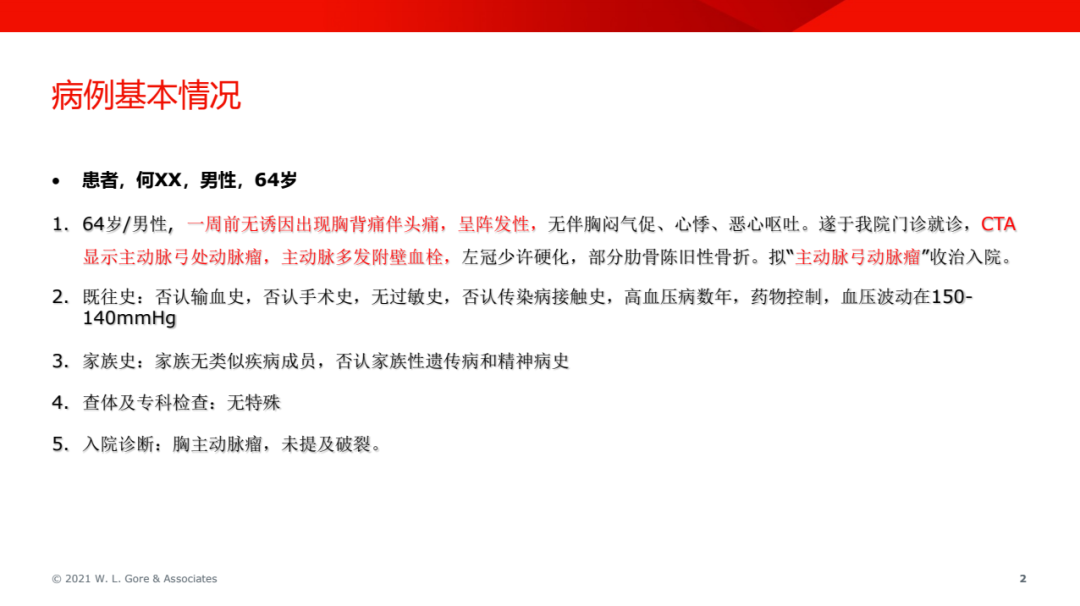
Surgical Plan
Professor Zheng’s team opted for a Hybrid IV procedure involving supra-aortic branch bypass and endovascular aneurysm exclusion. The detailed steps are as follows:
1. Preoperative Preparation: After general anesthesia, standard disinfection, and draping, both common carotid arteries and the left subclavian artery were freed. Surgical bypass was performed, and the aneurysm sac was embolized with coils. The covered aortic stent was anchored to the distal part of the aortic neck to complete the endovascular exclusion.
2. Surgical Challenges:
• The proximal short curve anchoring zone was only 9mm, presenting a short anchoring zone.
• The proximal anchoring zone diameter ranged from 34mm to 42mm, exhibiting trapezoidal dilation.
• The distal vessel diameter was 27-29mm, necessitating the use of restrictive stents to reduce paraplegia risk.
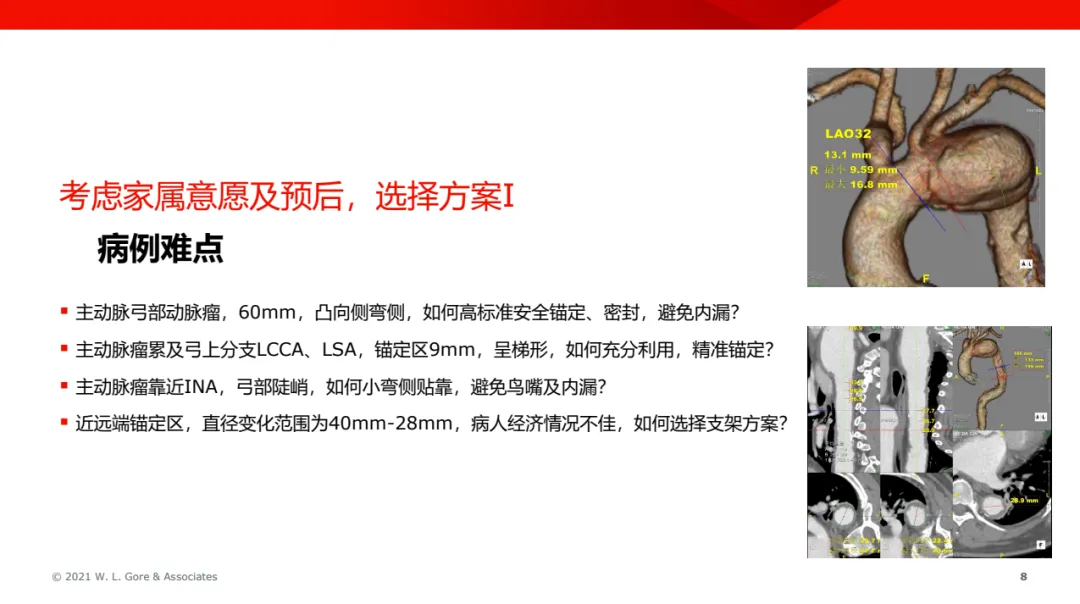
3. Device Selection:
• GORE® TAG® Active Control Thoracic Stent-Graft TGM454520
• Hydrophilic-coated introducer sheath DSF2433
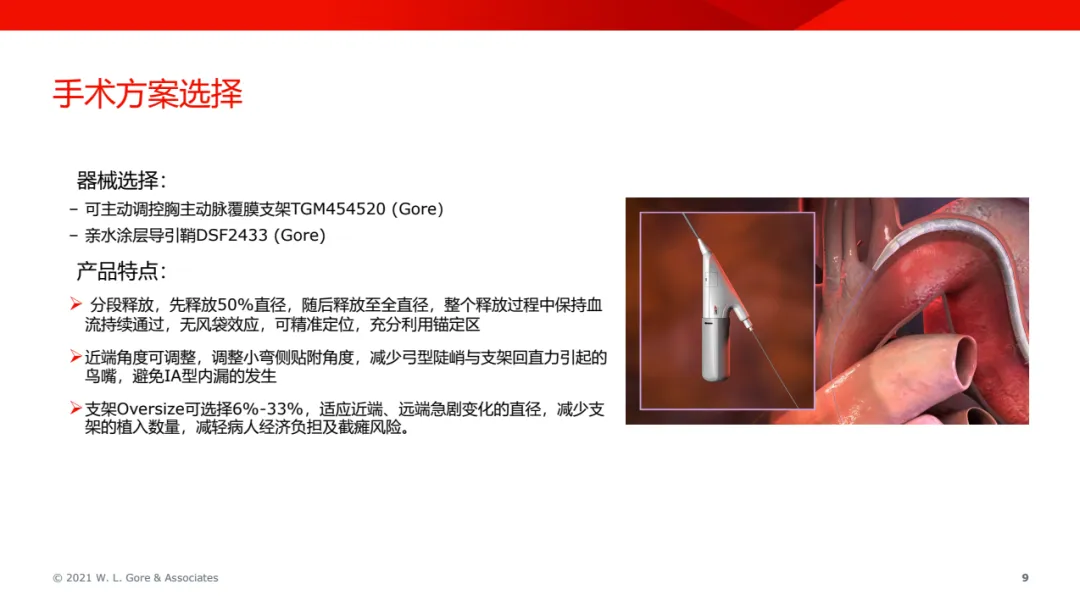
4. Surgical Procedure:
• Right femoral artery and left brachial artery puncture and sheath insertion, followed by angiographic confirmation of the access route.
• Exchange of Lunderquist extra-stiff guidewire via the femoral artery and insertion of DSF2433 introducer sheath.
• Introduction and segmental deployment of the GORE® TAG® stent, initially releasing 50% diameter, then fully expanding it, and adjusting the proximal angle to optimize wall apposition ensuring accurate stent positioning.
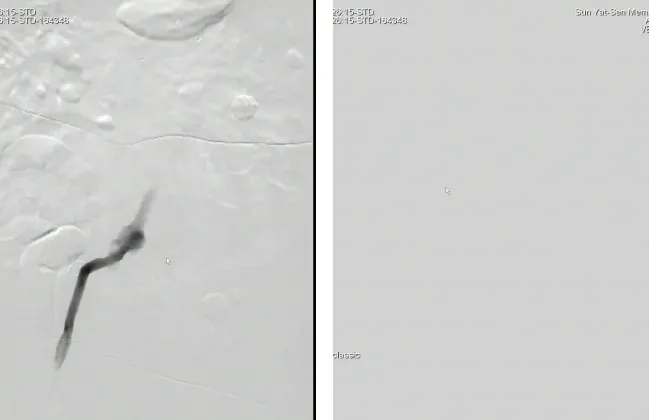
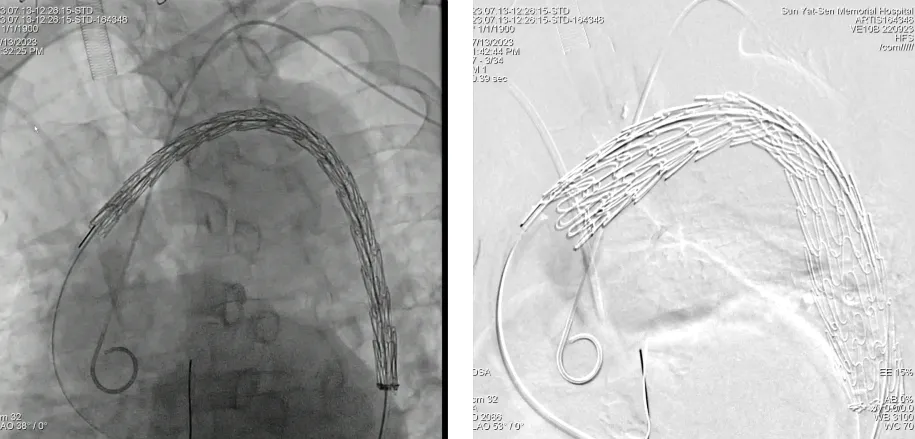
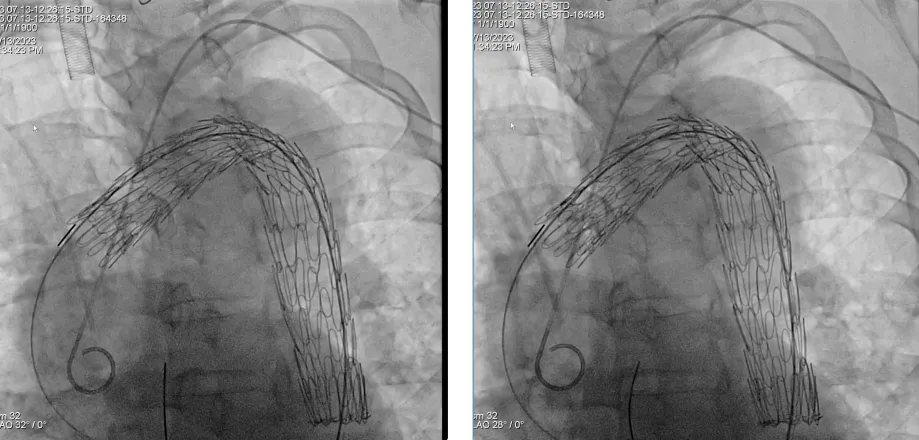
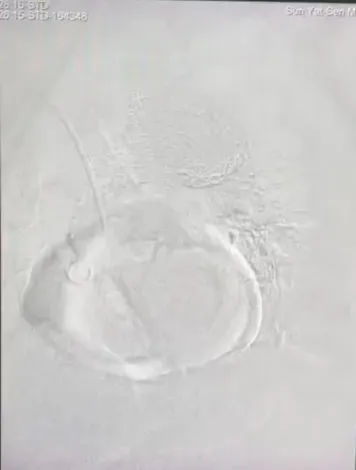
5. Postoperative Results:
• Follow-up one month post-surgery showed excellent thoracic aortic imaging, patent branches, well-positioned stent, no endoleak, and good aneurysm sac thrombosis.
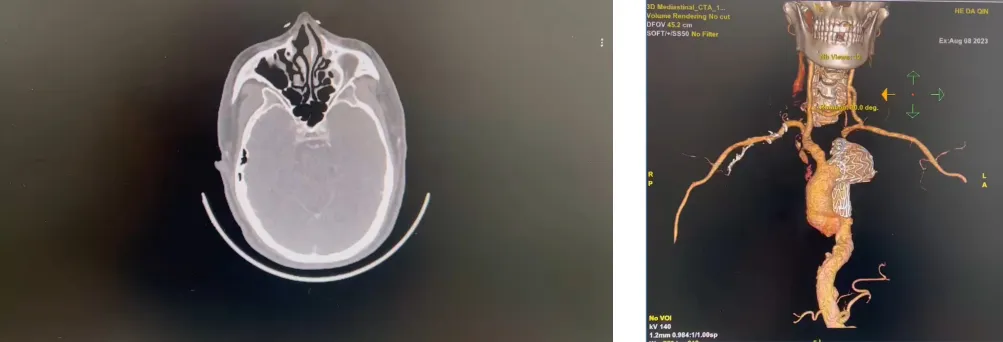
Summary
1. Hybrid Techniques: When the lesion involves the aortic arch, hybrid techniques can significantly enhance treatment outcomes and improve prognosis.
2. Preoperative Planning: For anatomically challenging arch and anchoring zone cases, meticulous preoperative measurement and evaluation of potential adverse events are crucial to selecting the appropriate surgical plan and devices and preparing contingency plans.
3. GORE® TAG® Stent: The GORE® TAG® Active Control Thoracic Stent-Graft, based on the Conformable GORE® TAG® design, features excellent conformability and passability with 6-33% oversize. Its unique segmental deployment avoids wind sock effect, allowing frame-by-frame release and high precision positioning. Combined with proximal angle adjustment functionality, it optimizes wall apposition and greatly enhances prognosis.
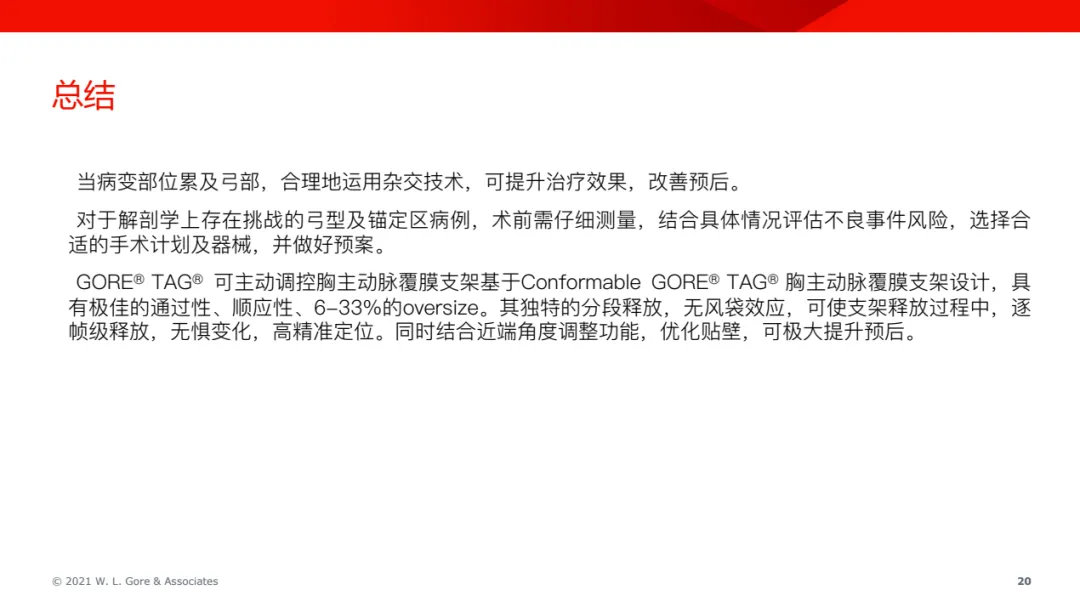
Surgeon Information
Professor Zheng Junmeng
• Director of Cardiovascular Surgery at Sun Yat-sen Memorial Hospital, Sun Yat-sen University
• Expertise: Diagnosis and treatment of common cardiothoracic diseases, particularly extracorporeal membrane oxygenation (ECMO), heart and lung transplantation, and other major cardiac and vascular surgeries. Recently, he has also pioneered minimally invasive endoscopic and Da Vinci robotic heart surgeries with satisfactory outcomes.
• Research Achievement: His work on “Allogeneic Heart Transplantation for End-Stage Heart Disease” won the third prize in Guangdong Provincial Scientific and Technological Progress Awards.

Contact Us
In the upcoming series of articles, we will continue to delve deeper into TEVAR technology, including indications and contraindications, new technological developments, surgical procedures, complication management, case studies, and future directions. Stay tuned! If you have any questions or interests regarding TEVAR technology or the Tianfu Vascular Conference, please leave a comment or contact us via email at endovascluar@simtomax.cn. Thank you for your attention. Let’s work together for health!


